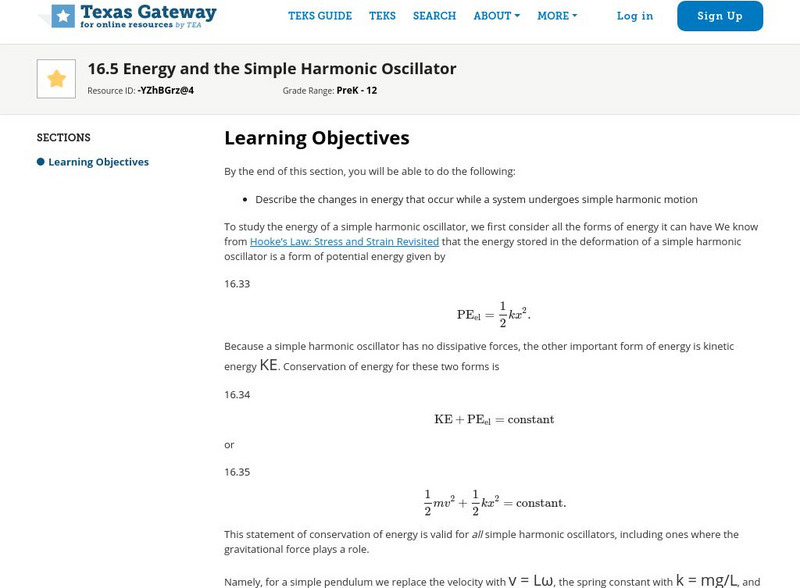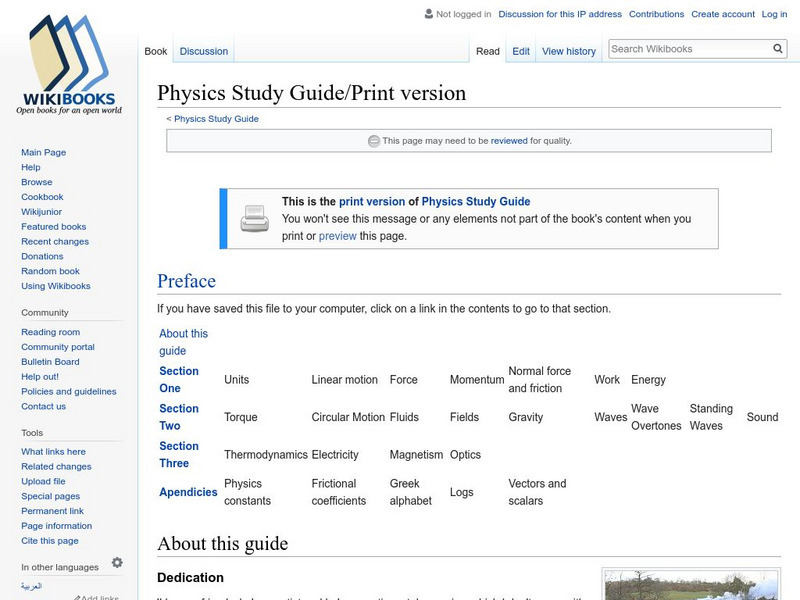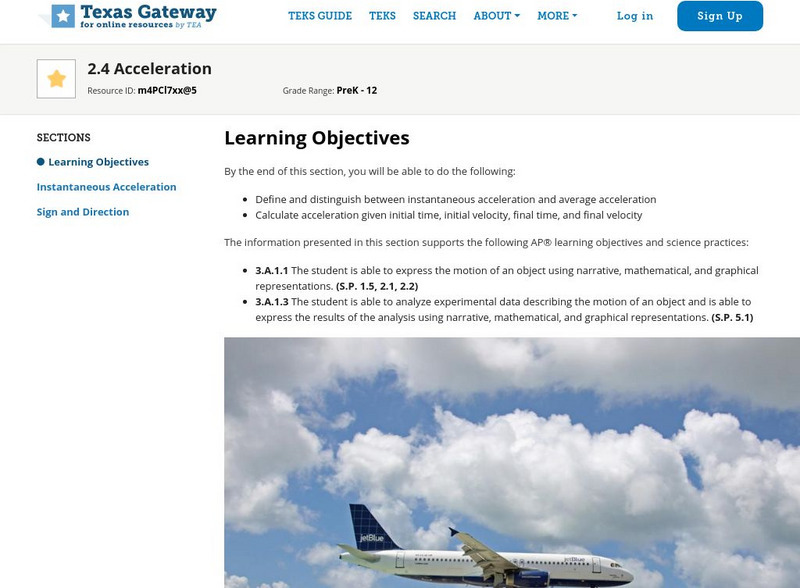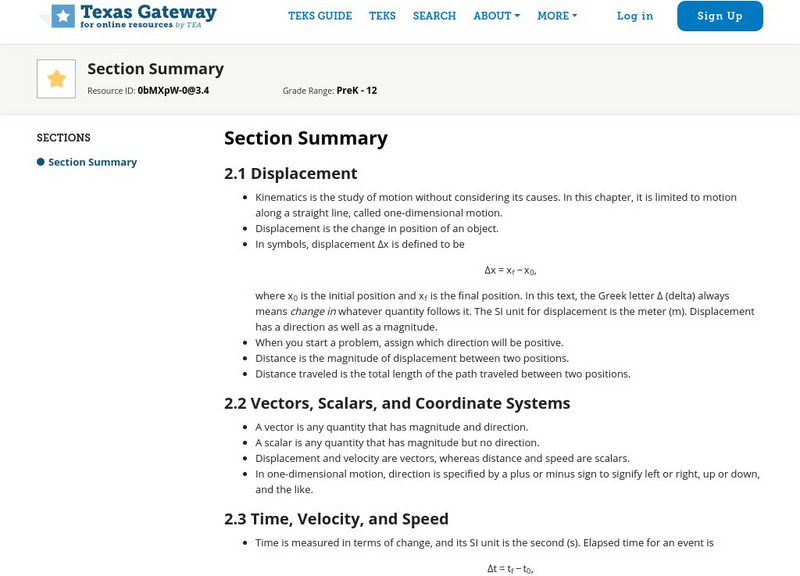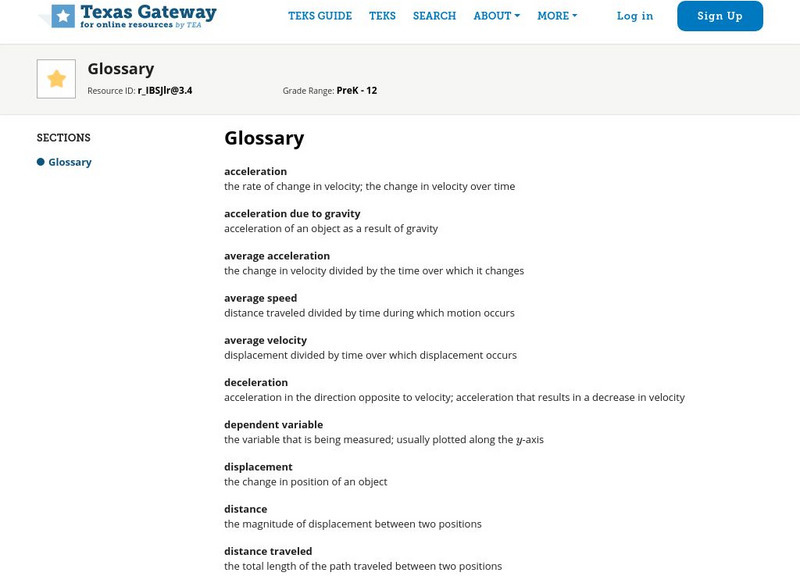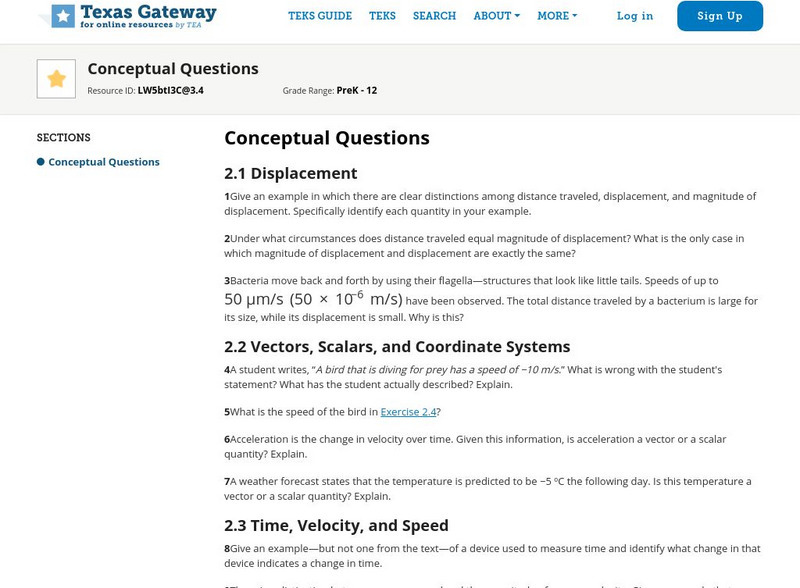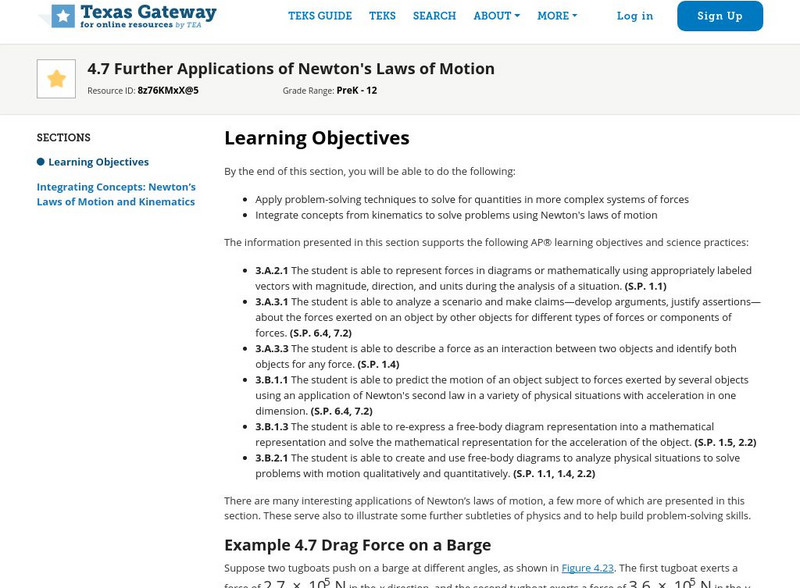Texas Education Agency
Texas Gateway: Physics of Hearing: Problems and Exercises
This is a list of 84 problems and exercises to solve based on the content of Chapter 17: Physics of Hearing from the AP Physics online text.
Texas Education Agency
Texas Gateway: Physics of Hearing: Conceptual Questions
This is a list of 15 questions based on the major concepts presented in Chapter 17: Physics of Hearing from the AP Physics online text.
Texas Education Agency
Texas Gateway: Physics of Hearing: Ultrasound
By the end of this section, you will be able to define acoustic impedance and intensity reflection coefficient, describe medical and other uses of ultrasound technology, calculate acoustic impedance using density values and the speed of...
Texas Education Agency
Texas Gateway: Physics of Hearing: Hearing
By the end of this section, you will be able to define hearing, pitch, loudness, timbre, note, tone, phon, ultrasound, and infrasound; compare loudness to frequency and intensity of a sound; and identify structures of the inner ear and...
Texas Education Agency
Texas Gateway: Ap Physics I: Appendices: Glossary of Key Symbols
This is a glossary of key symbols and definitions used in the Texas Gateway AP Physics I online textbook.
Texas Education Agency
Texas Gateway: Oscillatory Motion and Waves: Waves
By the end of this section, you will be able to describe various characteristics associated with a wave and differentiate between transverse and longitudinal waves.
Texas Education Agency
Texas Gateway: Energy and the Simple Harmonic Oscillator
By the end of this section, you will be able to describe the changes in energy that occur while a system undergoes simple harmonic motion.
Texas Education Agency
Texas Gateway: Simple Harmonic Motion: A Special Periodic Motion
By the end of this section, you will be able to describe a simple harmonic oscillator and relate physical characteristics of a vibrating system to aspects of simple harmonic motion and any resulting waves.
Other
Hippo Campus: Teaching Physics Blog
HippoCampus offers a blog for physics teachers, the purpose of which is to offer ideas for instructing and engaging students in both traditional high school and AP physics. Authored by Tom Anderson, an online instructor for Illinois...
Other
Wikibooks: Physics Study Guide
A study guide to supplement a freshman level physics course taught without calculus. This not intended to be a stand alone textbook.
John Wiley & Sons
Cutnell & Johnson Physics: Online Study Edition
Want to review concepts covered in your physics class? This website contains concept specific simulations, problems, and quizzes. Broken down by chapter and topic this site is an excellent place to start your review!
Texas Education Agency
Texas Gateway: 2.6 Problem Solving Basics for One Dimensional Kinematics
By the end of this section, you will be able to do the following: Apply and problem-solving steps strategies to solve problems of one-dimensional kinematics and Apply strategies to determine whether or not the result of a problem is...
Texas Education Agency
Texas Gateway: Ap Physics: 2.4 Acceleration
By the end of this section, you will be able to do the following: Define and distinguish between instantaneous acceleration and average acceleration; and Calculate acceleration given initial time, initial velocity, final time, and final...
Texas Education Agency
Texas Gateway: Kinematics Section Summary
This is a summary of the main topics for AP Physics Chapter 2 Kinematics. These include Displacement; Vectors, Scalars, and Coordinate Systems; Time, Velocity, and Speed; Acceleration; Motion Equations for Constant Acceleration in One...
Texas Education Agency
Texas Gateway: Ap Physics: Glossary for Kinematics
This is a glossary of terms and definitions used in AP Physics: Chapter 2: Kinematics.
Texas Education Agency
Texas Gateway: 3.1 Kinematics in Two Dimensions: An Introduction
By the end of this section, you will be able to observe that motion in two dimensions consists of horizontal and vertical components and understand the independence of horizontal and vertical vectors in two-dimensional motion.
Texas Education Agency
Texas Gateway: Ap Physics: Introduction to Physics Summary Section
This page offers a summary of each section in Chapter 1: Introduction to Physics of the AP Physics online text. It covers the main concepts such as Physical Quantities and Units and Approximation.
Texas Education Agency
Texas Gateway: Ap Physics: Kinematics Conceptual Questions
This page provides practice questions on each of the conceptual content sections in AP Physics: Chapter 2: Kinematics.
Texas Education Agency
Texas Gateway: Glossary for Kinematics in Two Dimensions
This is a glossary of terms and definitions used in Chapter 3: Kinematics in Two Dimensions of the AP Physics online text.
Texas Education Agency
Texas Gateway: 3.3 Vector Addition and Subtraction: Analytical Methods
By the end of this section, you will be able to understand the rules of vector addition and subtraction using analytical methods, apply analytical methods to determine vertical and horizontal component vectors, and apply analytical...
Texas Education Agency
Texas Gateway: Newton's Laws: Friction, Drag, & Elasticity: Conceptual Questions
This page offers a list of 16 questions covering the major concepts in Chapter 5: Further Applications of Newton's Laws: Friction, Drag, and Elasticity from the AP Physic online text.
Texas Education Agency
Texas Gateway: Glossary for Forces and Newton's Laws
This is a glossary of terms and definitions used in Chapter 4: Force and Newton's Laws of Motion from the AP Physics online text.
Texas Education Agency
Texas Gateway: 4.8 Extended Topic: The Four Basic Forces: An Introduction
By the end of this section, you will be able to understand the four basic forces that underlie the processes in nature: gravitational, electromagnetic, weak nuclear, strong nuclear forces.
Texas Education Agency
Texas Gateway: 4.7 Further Applications of Newton's Laws of Motion
By the end of this section, you will be able to apply problem-solving techniques to solve for quantities in more complex systems of forces and to integrate concepts from kinematics to solve problems using Newton's laws of motion.








